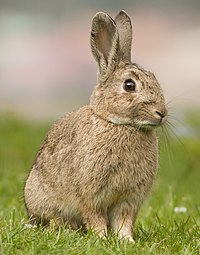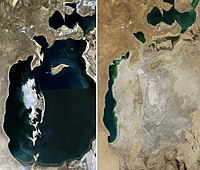
Exploring the impacts of mercury chloride exposure on fatty acids profile, oxidative stress response and histomorphological aspect of Cerastoderma edule detoxifying organs
Sign Up to like & getrecommendations! Published in 2020 at "Ecological Indicators"
DOI: 10.1016/j.ecolind.2020.106798
Abstract: Abstract Mercury chloride (HgCl2) is a highly toxic compound which provokes a wide range of complicated disorders. The present work aimed to investigate the potential effects of HgCl2 toxicity on the redox state, fatty acids… read more here.
Keywords: fatty acids; mercury chloride; edule; aspect cerastoderma ... See more keywords

Minute co-variations of Sr/Ca ratios and microstructures in the aragonitic shell of Cerastoderma edule (Bivalvia) – Are geochemical variations at the ultra-scale masking potential environmental signals?
Sign Up to like & getrecommendations! Published in 2017 at "Geochimica et Cosmochimica Acta"
DOI: 10.1016/j.gca.2017.02.019
Abstract: Abstract It remains a challenging task to reconstruct water temperatures from Sr/Ca ratios of bivalve shells. Although in many aragonitic species, Sr/Ca is negatively correlated to temperature – which is expected based on abiogenic precipitation… read more here.
Keywords: growth lines; shell portions; shell; cerastoderma edule ... See more keywords

Temporal dynamics of infection of cockles Cerastoderma edule with the protistan parasite Minchinia tapetis (Rhizaria: Haplosporida) in Galicia (NW Spain).
Sign Up to like & getrecommendations! Published in 2020 at "Journal of invertebrate pathology"
DOI: 10.1016/j.jip.2020.107349
Abstract: Uninucleate and binucleate cells and multinucleate plasmodia of a haplosporidan-like protist associated with heavy haemocytic infiltration were observed in histological sections of cockles, Cerastoderma edule, from the Ría de Noia (Galicia, NW Spain) in the… read more here.
Keywords: tapetis; galicia spain; infection; cockles cerastoderma ... See more keywords

Physiological responses to ocean acidification and warming synergistically reduce condition of the common cockle Cerastoderma edule.
Sign Up to like & getrecommendations! Published in 2017 at "Marine environmental research"
DOI: 10.1016/j.marenvres.2017.07.001
Abstract: The combined effect of ocean acidification and warming on the common cockle Cerastoderma edule was investigated in a fully crossed laboratory experiment. Survival of the examined adult organisms remained high and was not affected by… read more here.
Keywords: cockle cerastoderma; acidification warming; acidification; ocean acidification ... See more keywords

Himasthla spp. (Trematoda) in the edible cockle Cerastoderma edule: review, long-term monitoring and new molecular insights
Sign Up to like & getrecommendations! Published in 2022 at "Parasitology"
DOI: 10.1017/s0031182022000373
Abstract: Abstract Abstract Trematodes are the main macroparasites in coastal waters. The most abundant and widespread form of these parasites is metacercaria. Their impact on their host fitness is considered relatively low but metacercarial larvae of… read more here.
Keywords: cockle; cockle cerastoderma; review; himasthla spp ... See more keywords

Organic contamination in clams, Venerupis aurea laeta and Cerastoderma edule glaucum, from Sicily (Italy)
Sign Up to like & getrecommendations! Published in 2018 at "Natural Product Research"
DOI: 10.1080/14786419.2017.1350674
Abstract: Abstract Two species of edible clams Venerupis aurea laeta and Cerastoderma edule glaucum from Ganzirri Lake (Sicily, Italy) were investigated to determine OCP and PCB residues by GC-MS. Thirty-five samples were examined for two years… read more here.
Keywords: clams venerupis; aurea laeta; laeta cerastoderma; edule glaucum ... See more keywords

Transcriptomic Profile of the Cockle Cerastoderma edule Exposed to Seasonal Diarrhetic Shellfish Toxin Contamination
Sign Up to like & getrecommendations! Published in 2021 at "Toxins"
DOI: 10.3390/toxins13110784
Abstract: Bivalves constitute an important source of proteins for human consumption, but some accumulate biotoxins such as diarrhetic shellfish toxins (DSTs), constituting a risk to human health. The cockle Cerastoderma edule is one of the most… read more here.
Keywords: transcriptomic profile; diarrhetic shellfish; cerastoderma edule; cockle cerastoderma ... See more keywords